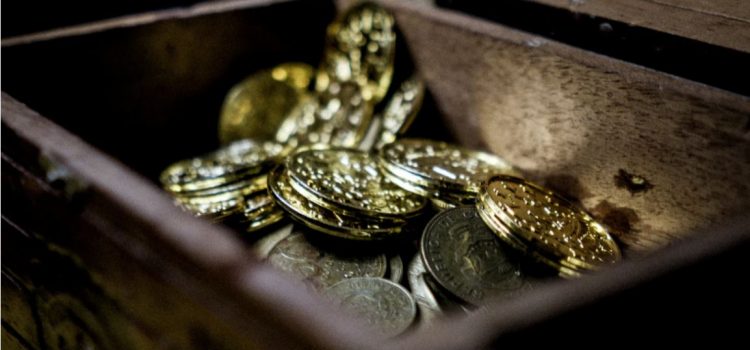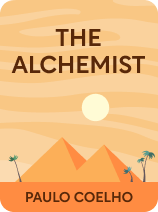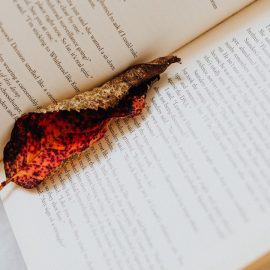

This article is an excerpt from the Shortform book guide to "The Alchemist" by Paulo Coelho. Shortform has the world's best summaries and analyses of books you should be reading.
Like this article? Sign up for a free trial here .
What are some of the symbols in The Alchemist? What do those symbols mean?
In Paulo Coelho’s story The Alchemist, symbols are important. Through these symbols, Coelho shares some deeply important messages about perseverance, love, and destiny. The major symbols in the story are the desert, the oasis, and the treasure.
We’ll go over each symbol and its meaning below.
The Desert
The first symbol in The Alchemist is the desert. A major theme of the story is overcoming obstacles, and Coelho shows us through the metaphor of traversing the hostile desert that perseverance in the face of obstacles is crucial in following one’s calling.
The desert itself appears almost as a character in the story, as it’s the space within which transformation and connection to the divine spirit happens. It symbolizes the “tests” Santiago has to go through in order to reach his destination and fulfill his calling. The desert is harsh and unforgiving on the surface, but when the boy learns to look deeply, to commune with the nature around him, and to speak the language of the divine spirit, he becomes aware that there’s life everywhere and that that life will guide him to his treasure. With this, Coelho also shows us that we can find beauty in all of life, if we look deeply.
| The Symbolism of the Desert The desert has a symbolic association in Christianity with the trials and temptations of Christ, and we see that mirrored in Santiago’s journey in The Alchemist. It has also been associated with spiritual transformation. A group of Chrstian monks called the Desert Fathers took to the Sahara desert to establish a contemplative practice called “guarding the heart.” This was essentially an ancient mindfulness practice of controlling and purifying your thoughts to improve your spiritual well-being. The ultimate aim of this practice was to achieve a state of deep inner peace. We see in The Alchemist this same kind of contrast between hardship and beauty; when the boy learns to recognize the life that’s all around him in the desert, he’s able to tap into the power of transformation. |
The Oasis
The caravan eventually arrives at an oasis, where the boy finds love. He meets a girl named Fatima, with whom he feels an instant soul-mate bond, and he knows she must be part of his calling. He’s tempted to give up his mission and stay in the oasis with Fatima. He fears that if he leaves he’ll never see her again, although she assures him she’ll wait for him because she too believes in the universal signs. But again, his temptation to stay is a test, as he’ll soon discover. Santiago will realize that again he almost gave up on following his calling out of fear and the lure of comfort over risk.
Through this portion of the story, Coelho creates the contrast between desert and oasis to highlight the choices we may encounter along our paths to our calling. The desert represents the trials and tribulations one must face and the endless possibilities that lie ahead, while the oasis represents the comfort that people choose over those risks inherent in journeying through the desert.
| Run From What’s Comfortable Knowing that Coelho was influenced by the Sufi tradition, and particularly by the poetry of Rumi, we can see in that poetry connections to some of the major themes in The Alchemist. For example, in “Feeling the Shoulder of the Lion,” a Coleman Barks translation of Rumi, we find this verse: “Run from what’s comfortable. Forget safety. Live where you fear to live. Destroy your reputation. Be notorious. I have tried prudent planning long enough. From now on I’ll be mad.” Throughout the book, Coelho warns us against choosing comfort over taking risks. He encourages us to live boldly and follow our calling, which may involve ruining our reputation with those who expect conformity. We may even be interpreted as “mad” by those who don’t have the courage to follow their calling. |
The Treasure
In this final portion of the story, Coelho teaches us that we must be open to finding our destiny in unexpected places, and that it must be found before we can truly live the life we were meant to live.
When the alchemist leaves him, the boy continues alone on his path toward the pyramids, with the transformative power of alchemy as his strength. He has learned that not only can he speak with the wind and the sun, but those are parts of him—he is the wind and the sun and the desert and the stars. Everything is one, united by the universal soul and language of love.
After some more travel, as the boy reaches the top of a large dune, he sees in the distance the Egyptian pyramids. At that sight, he drops to his knees and begins to weep. Then he notices a scarab beetle next to him, which he knows is a sacred symbol to Egyptians, so he interprets this as a sign and begins to dig there for his treasure. (Shortform note: It is said that the scarab beetle represented renewal and rebirth in ancient Egyptian mythology. Whether this was intentional by Coelho or not, it seems appropriate considering the beetle appeared at the climactic moment, when the boy has faced near-death and finally arrived at the place where he’ll have the insight that will lead him to his life-changing treasure.)
But Santiago finds nothing. At that moment, some wanderers appear and attempt to rob him, but find that he has nothing. The boy then tells them about his recurrent dream that he’d find treasure near the Egyptian pyramids. One of the wanderers scoffs and tells him he also had a recurrent dream of a treasure buried in the ruins of a Spanish church, where a sycamore tree grows, but that he’s not foolish enough to go across the world looking for it. And it’s then that the boy realizes his treasure is really buried back where he began.
He sets off back through the desert, on the long trek back to Andalusia, to the same spot where he had the dream, at the church ruins, and he begins to dig. And there he finds a chest full of gold and precious gems. His treasure was there all along. But now he knows where his heart lies, and he takes the treasure and sets off again to return to Fatima, his true love who waits for him in the oasis.
In this final scene, Coelho reveals to us that in the search for our destiny, we must always remain open to finding it in the most unexpected places, even if it means crossing the world and back again.

———End of Preview———
Like what you just read? Read the rest of the world's best book summary and analysis of Paulo Coelho's "The Alchemist" at Shortform .
Here's what you'll find in our full The Alchemist summary :
- A guide to the infamous story by Paulo Coelho
- A breakdown of the symbolism and lessons found in the story
- A comparison of Coelho's ideas to other philosophical and spiritual traditions and beliefs





